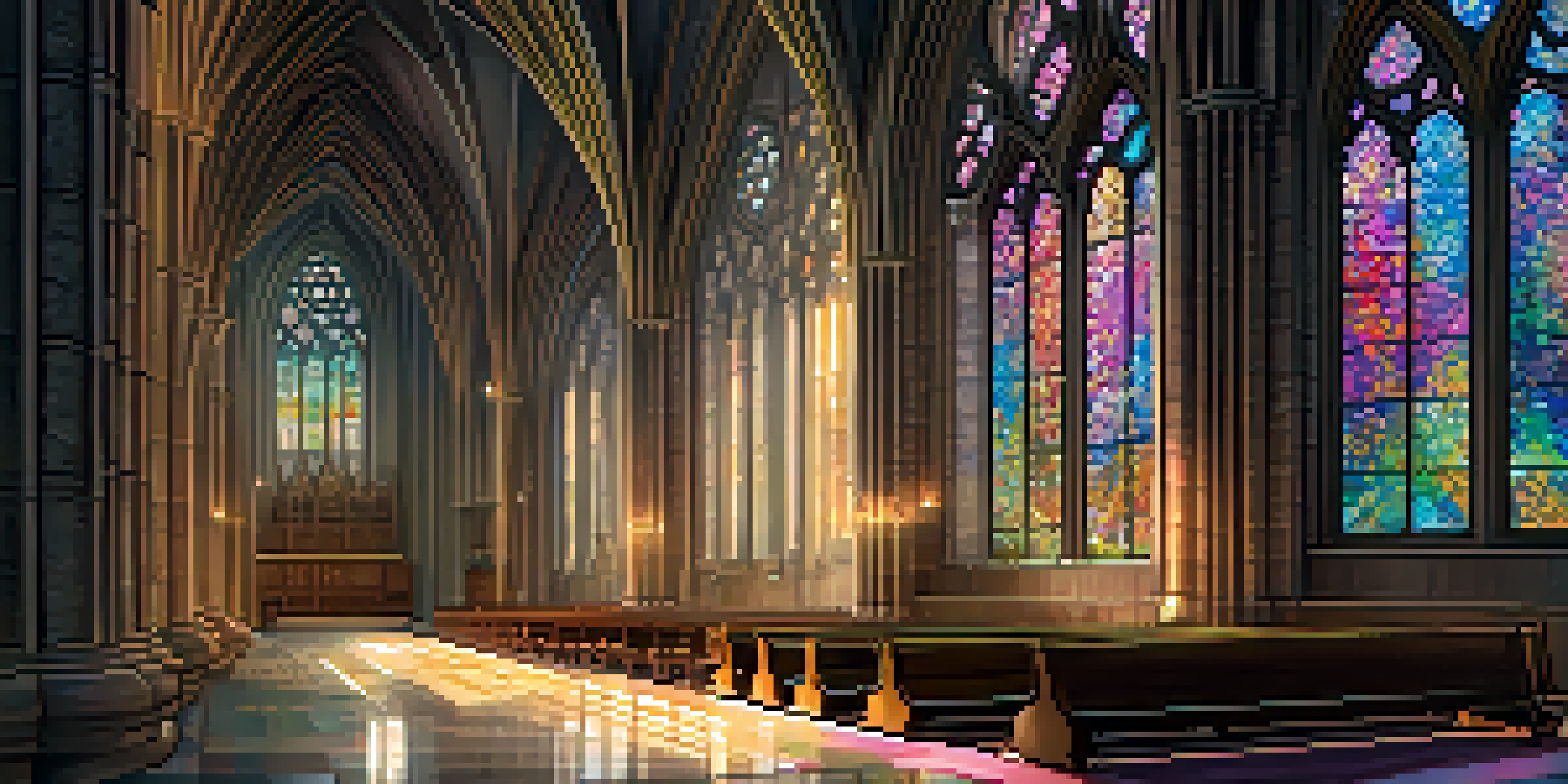The Evolution of Art in Spain: Museums Reflecting Change

The Roots of Spanish Art: Prehistoric to Medieval
Spain's artistic journey begins with prehistoric cave paintings, like those in Altamira, showcasing the early human connection to creativity. This deep-rooted history set the stage for the diverse influences that would shape Spanish art over centuries. As the Middle Ages unfolded, religious themes dominated, with Gothic cathedrals and illuminated manuscripts capturing the spirit of the times.
Renaissance Flourish: A New Artistic Era
The Renaissance marked a significant shift in Spanish art, characterized by a renewed interest in classical themes and humanism. Artists like El Greco brought dramatic color and emotion to their works, paving the way for future generations. This period also saw the establishment of prominent museums, such as the Museo del Prado, which began to collect masterpieces that defined this transformative era.
Spanish Art's Rich Historical Journey
Spain's artistic evolution spans from prehistoric cave paintings to modern expressions, reflecting diverse influences over centuries.
Baroque Brilliance: The Height of Emotion
As the Baroque era took hold, Spanish art became even more expressive and dynamic. Artists like Diego Velázquez and Francisco de Goya pushed boundaries with their innovative techniques and themes. The Museo del Prado became a vital hub for Baroque masterpieces, allowing viewers to experience the intensity and passion of this vibrant period in art history.
Romanticism and Realism: A Shift in Perspective
The 19th century introduced Romanticism, where emotions and individual expression took center stage. Artists like Goya transitioned toward more personal narratives, reflecting the socio-political upheaval of the time. As realism emerged, museums began to showcase works that depicted everyday life, urging audiences to connect with the human experience on a deeper level.
Museums as Art Evolution Catalysts
Museums serve as crucial platforms for preserving cultural heritage, showcasing both historical masterpieces and contemporary innovations.
Modernism: Breaking Traditions and Exploring New Mediums
The turn of the 20th century brought Modernism, a movement characterized by experimentation and a break from tradition. Artists like Pablo Picasso and Salvador Dalí challenged conventional techniques, embracing abstraction and surrealism. Museums began to reflect this diversity, highlighting the importance of innovation in Spanish art through exhibitions that celebrated these trailblazers.
Contemporary Art: A Reflection of Society
Contemporary Spanish art mirrors the complexities of modern society, often addressing issues like identity, politics, and globalization. Artists such as Miquel Barceló and Dora García engage with audiences through thought-provoking installations and performances. Museums have adapted to showcase contemporary works, creating spaces that invite dialogue and reflection on current societal themes.
Future of Art in a Global Context
The future of Spanish art will be shaped by global influences and technological advancements, particularly in digital mediums.
The Role of Museums in Art Evolution
Museums play a pivotal role in the evolution of art, acting as custodians of cultural heritage while fostering innovation. They not only preserve historical works but also provide a platform for emerging artists. Through exhibitions, educational programs, and community engagement, museums help bridge the gap between past and present, ensuring that the evolution of Spanish art continues to thrive.
Future Directions: Art in a Globalized World
As we look to the future, Spanish art will continue to evolve in response to global influences and technological advancements. The rise of digital art and new media is reshaping how artists express themselves and how audiences engage with their work. Museums are adapting to these changes, embracing new forms of art and ensuring that Spain remains a vibrant player on the international art stage.